Unveil the December birthstone and welcome the stunning turquoise
In December, people are reminded of the picture of ice and snow. The birthstone for this month is turquoise, and that touch of blue and green it brings to us symbolizes spring and hope. At the same time, turquoise represents victory and has the reputation of “the stone of success”.
The English word for turquoise is Turquoise, and abroad, turquoise is known as “Turkish jade”. But in fact, turquoise is not produced in Turkey, turquoise was produced in ancient Persia and imported into Europe through Turkey, so people are accustomed to calling turquoise “Turkish jade”. Quite a few members of European royalty are also fans of turquoise.
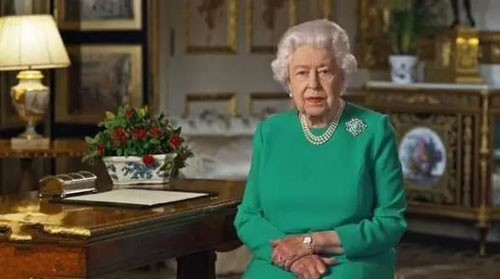
Turquoise was called “turquoise” in ancient times, and it was named after “the shape resembles a pine ball and the color is close to green pine”. The light and elegant turquoise color is just in line with the restrained aesthetic taste of the Chinese and is deeply loved by everyone. In ancient times, turquoise was also a gemstone for rulers to show their power and wealth, and the Qing Dynasty called it a jewel of heaven, regarded as a holy object of auspiciousness and happiness. For the Tibetan people, turquoise is also one of the most popular sacred decorations.
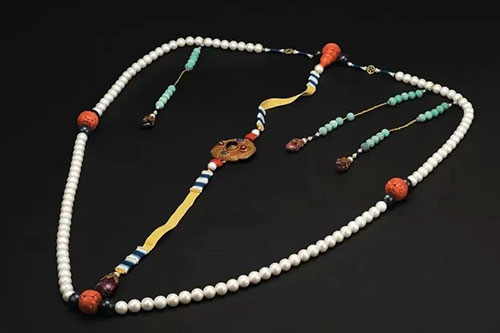
Turquoise / Nature and origin
Turquoise is a watery copper-aluminum phosphate, which is a typical self-colored mineral, the presence of copper ions determines its blue base color, and the presence of iron ions affects its hue. As the content of iron ions increases, the turquoise changes from sky blue to green or earthy yellow. The presence of water inside the mineral makes the color of turquoise more vivid, and when the water inside the mineral is lost due to weathering or air drying, it will also be accompanied by the loss of chromogenic ions, and the color of turquoise will also change from blue to gray-green and gray-white. The mineral particles of turquoise are fine, and the turquoise with compact structure and low impurity content is delicate and dense; Those with loose structure and high impurity content have loose and rough texture, and usually need to be filled before they can be used.
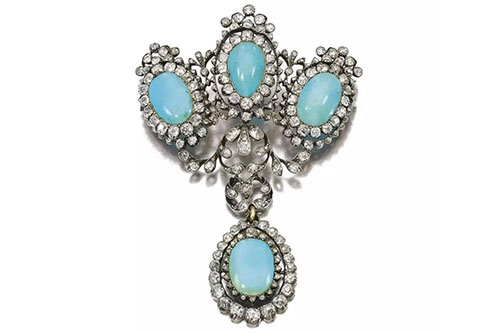
Next, let’s take a look at where turquoise comes from. The main countries in the world that produce turquoise are Iran, the United States, Egypt, Russia, China, etc. China’s turquoise is mainly concentrated at the junction of Hubei, Henan and Shaanxi. The turquoise mines produced in Yunxian and Zhushan counties in northwest Hubei are the most famous, followed by Baihe and Ankang in Shaanxi, and also produced in Xinjiang Uygur Autonomous Region and Anhui in China.
Turquoise / How to choose
Want to buy turquoise, how do I choose?
The quality evaluation of turquoise should be comprehensively considered from the following aspects.
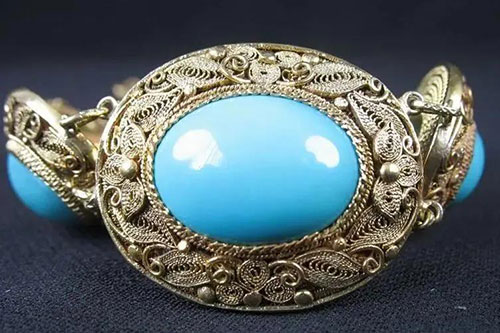
color
Turquoise comes in a variety of colors such as sky blue, dark blue, light blue, green, yellow-green, light green, etc. Of course, color is also an important factor in evaluating turquoise. The color should be pure, uniform and bright, and the sky blue is more valuable, which is more suitable for investment and collection, and everyone can also choose and buy according to their own preferences.
structure
High-grade turquoise requires a dense structure with high density and hardness. The density value can directly reflect the degree of weathering of turquoise, with the deepening of weathering, the relative density of turquoise decreases, the hardness decreases, and the quality is also significantly reduced.
Purity
Turquoise often contains impurities such as clay minerals and calcite, which are mostly white, and are called “white brains” or tendons in jade rows. The turquoise developed by the “white brain” is easy to explode during processing, and the quality is significantly reduced.
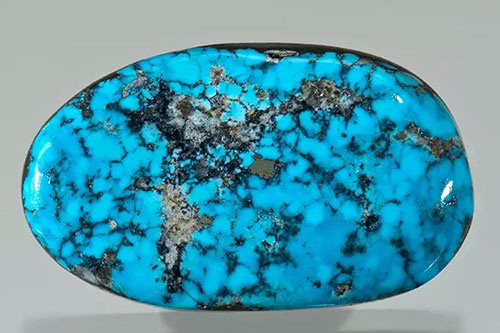
Iron wire
When turquoise coexists with veined black iron and carbonaceous, it is also called iron line turquoise, and when the iron wire forms a beautiful pattern in the turquoise, the quality of turquoise is improved. So, there will also be some man-made turquoise with iron wires on the market. However, natural wires tend to be concave, while synthetic wires are generally not concave.
Blockiness
Natural unprocessed turquoise is noduled and block-like, the larger the block, the better, and the same size of turquoise depends on whether there are impurities.
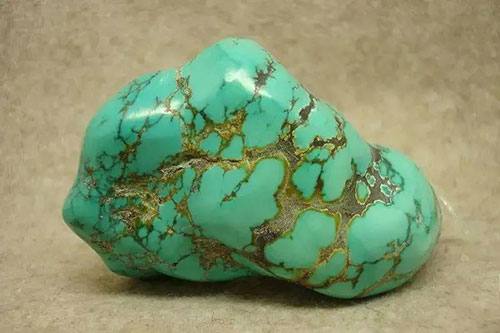
Turquoise / Optimization and Treatment
Also identify some common optimization techniques
stain
Dyeing is one of the methods of artificial treatment, which refers to the dye of light or near-white turquoise in a dye to dye it into the desired color. It can generally be judged by observation that the color of the fracture will appear darker, and the overall color of the dyed turquoise will be too uniform. In addition, dyed turquoise has a shallow degree of dye penetration, and light-colored nuclei may be exposed in surface spalling and in the rectory on the back.
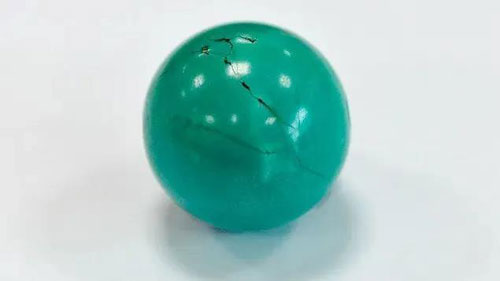
Filling and staining
Perfusion filling
Infusion filling, also known as stabilization, is the infusion of a binder material into turquoise at a certain temperature and pressure to improve its stability and durability, facilitate processing, and enhance transparency and color. These methods include oil immersion, wax immersion, injection molding, and sodium silicate injection. Stains are also sometimes incorporated into the perfusion material.
reforge
Reconstituted turquoise is made by cementing some natural turquoise particles, various copper salts or other metal blue powders at a certain temperature and pressure. Reconstituted turquoise has a typical granular structure, and magnified examination can reveal clear particle boundaries and dyes in the matrix.
Turquoise / Care & Cleaning
It is safer to use warm, soapy water to clean turquoise jewelry. Never use a steam or ultrasonic cleaner for cleaning. High temperatures or solvents may damage some treated turquoise surfaces. Turquoise has good photostability, but high heat can cause discoloration and damage. Acids can damage turquoise, and certain chemicals, cosmetics, and even skin oils or sweat can cause turquoise to fade.
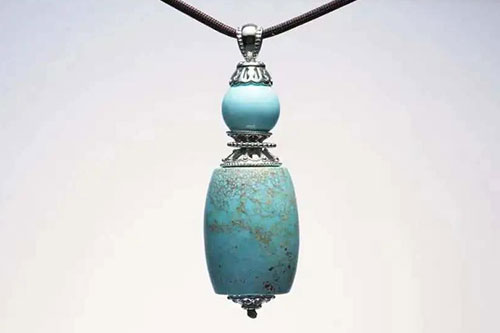
The above is the natural beauty of turquoise, it is simple and restrained. If you like it too, why don’t you choose one to multiply your aura and welcome the New Year.







Leave a Reply
Want to join the discussion?Feel free to contribute!